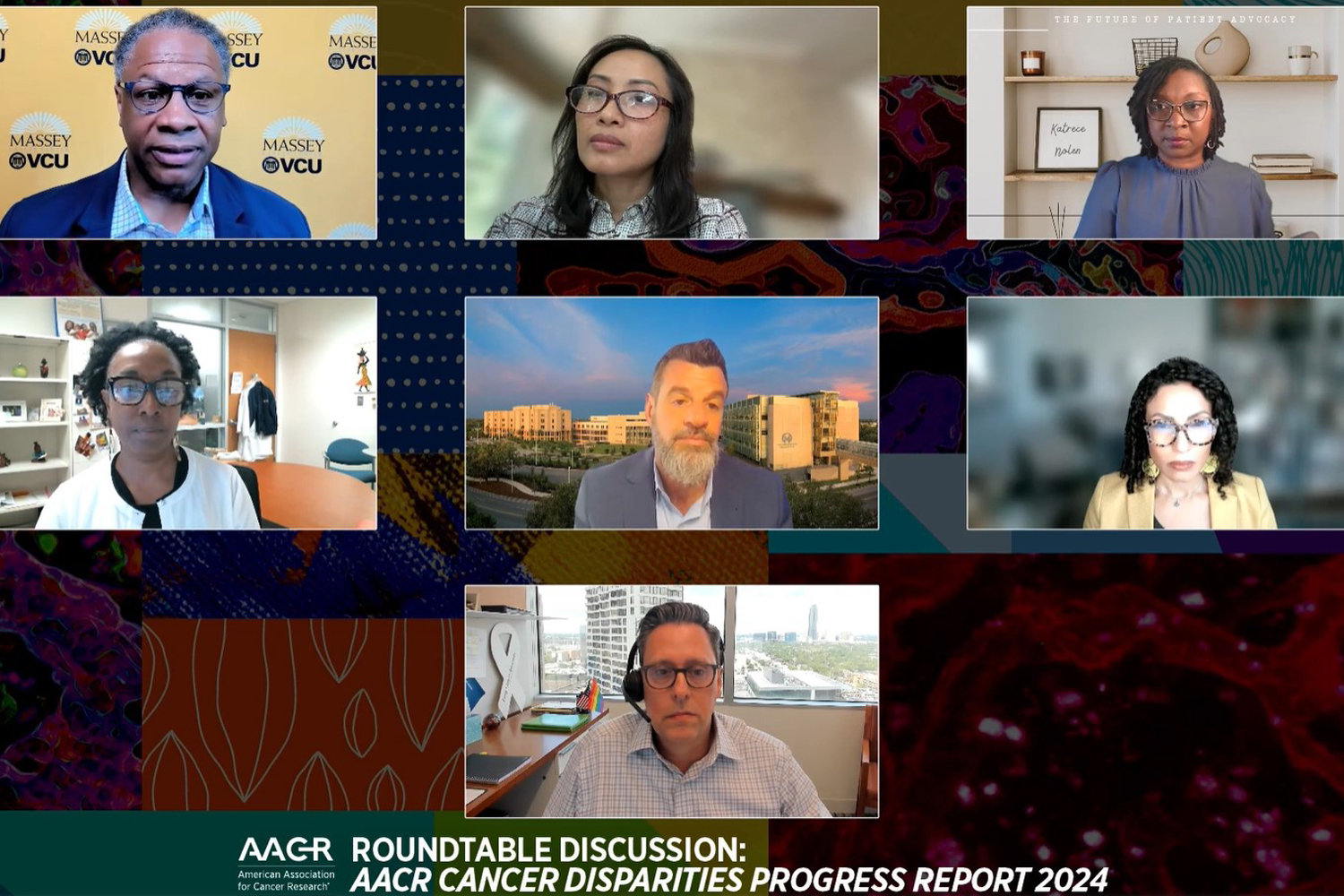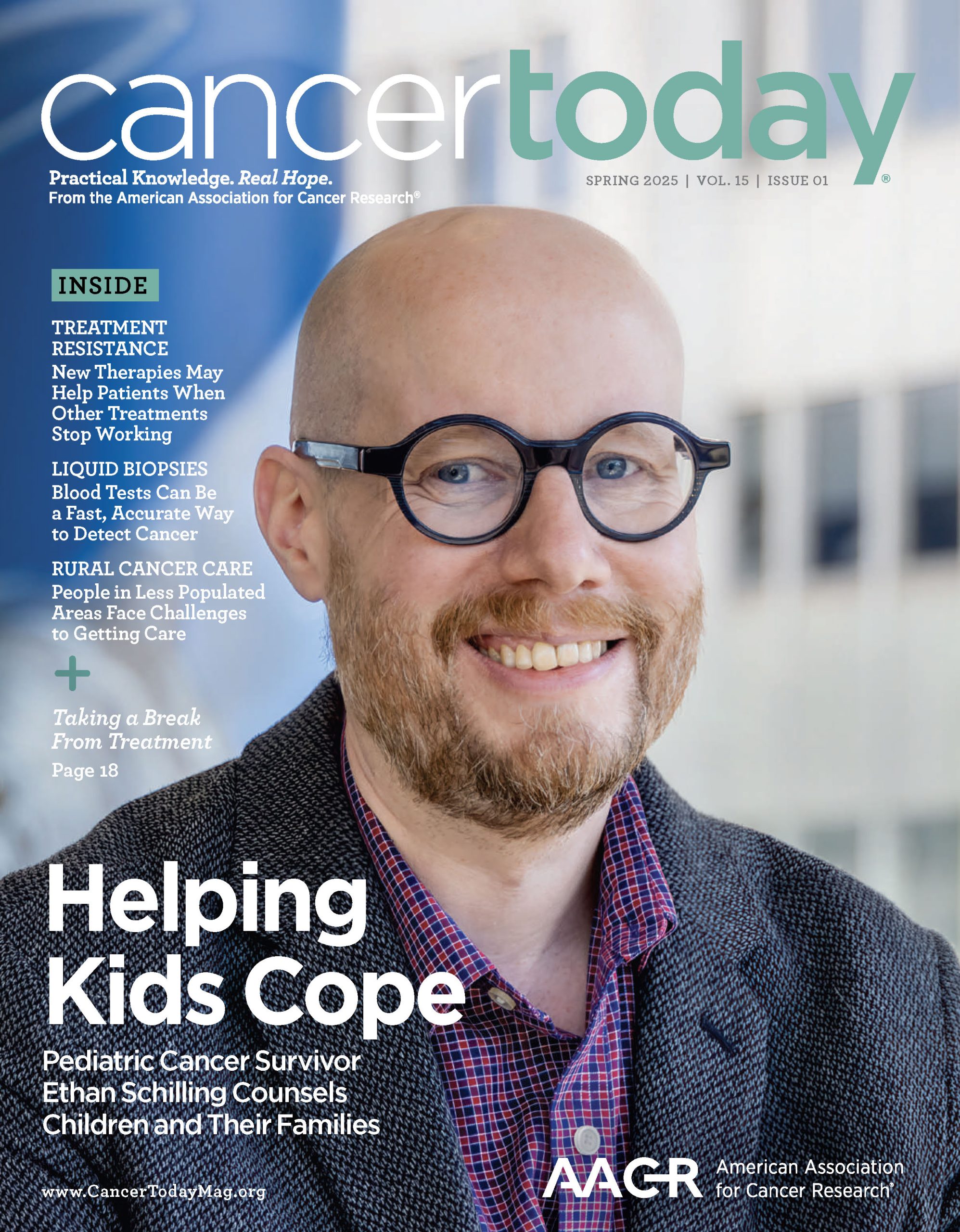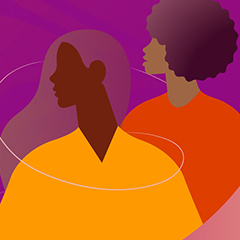HEALTH CARE DISPARITIES are not always out in the open, but statistics can help bring the varied experiences of people of different races, ethnicities and gender identities into clearer focus. The Cancer Disparities Progress Report 2024, which was first released on May 15, highlights data that illustrate persistent health inequities for these underserved populations.
On June 24, the American Association for Cancer Research (AACR), which published the report, gathered patients and experts to discuss the report findings and help advance public understanding of these inequities. (The AACR publishes Cancer Today.)
Robert A. Winn, the director of VCU Massey Comprehensive Cancer Center in Richmond, Virginia, and chair of the Cancer Disparities Progress Report committee, led the online roundtable discussion and encouraged listeners and participants to “get real” about cancer disparities. “We understand that good deeds and well-meaning thoughts are good, but resources that drive the research that ultimately results in our being able to close the gap could be even more realized in the future with investments,” he said.
Winn opened the discussion with good news—the cancer death rate in the U.S. has declined between 1990 and 2020, the latest year for which statistics are available. But these strides are less pronounced for Black people, he noted. “We should celebrate that it’s less of a gap, but we should also recognize that we have to work even more in doubling down and eradicating that gap altogether,” he said, before opening the discussion to a panel that included three cancer survivors and three health disparities researchers.
The Patient Perspective
For Katrece Nolen, a Black woman who was diagnosed with stage III inflammatory breast cancer more than 10 years ago, statistics were not in her favor. Inflammatory breast cancer makes up between 1% and 5% of all breast cancer diagnoses, Nolen noted. There are no screening tests for inflammatory breast cancer, which is typically diagnosed at a later stage. The five-year relative survival rate for inflammatory breast cancer for all women in the U.S. is 40%, she said, but that number drops to 30% for Black women. “And someone like me that’s a 10-year survivor, that’s only an 18% chance,” she said. Her treatment path, which she described as having many barriers, led her to patient advocacy. She noted how she was told that her health care facility didn’t have any clinical trials, but she interpreted that to mean there were no clinical trials at other facilities.
Nolen described steps health care providers can take to better connect with the community, including using social media platforms like TikTok and Instagram to tailor messages that speak to the people health care providers are hoping to reach. “If you present to them messaging that is boring, that is academic, they are not going to listen,” Nolen said. There are measures that can decrease cancer risk, Nolen added, but researchers are having a hard time communicating these messages to the people who can most benefit from them.
Discrimination can also impede how members of the LGBTQ+ seek and get cancer care. For example, a 2023 survey of sexual and gender minority (SGM) cancer survivors that was cited in the Cancer Disparities Progress Report found that 37% of respondents faced discrimination in a health care setting due to their sexual orientation or gender identity. In addition, the report noted that people who are part of these SGM populations often face delays in receiving cancer diagnoses compared with cisgender people.
Daniel West, 54, of Houston, was diagnosed with early-stage non-small cell lung cancer and had a lobectomy and chemotherapy. His cancer tested also positive for an EGFR gene mutation, which meant he was eligible to take a targeted therapy. He currently has no evidence of disease. While he was being treated at the University of Texas MD Anderson Cancer Center in Houston, West, who is gay, said he was reassured to see the hospital’s commitment to provide equitable care in writing.
However, West said he had reservations about why certain questions were asked about his gender identity during his treatment, and he noted the importance of hospitals in reassuring patient privacy throughout the process. To better understand the unique barriers that people in the LGBTQ+ community face, researchers have made efforts to add measures to record sexual orientation and gender identity in patient records so that they may better understand their unique needs.
Lung Cancer in Asian Women
In 2019, Phuong Ho, an Asian American panelist who is an emergency medicine physician at Kaiser Permanente Fremont Medical Center in California, was plagued by a chronic cough that she thought was asthma. When her symptoms did not improve with an inhaler and steroid, she went to a pulmonologist in 2020, knowing as an emergency medicine physician that her lung issues and a COVID-19 infection could create a deadly combination. After a CT scan of her chest, she was diagnosed with early-stage non-small cell lung cancer that was treated with surgery.
“As a physician, I was shocked after being diagnosed, because I was not aware there was such an increased incidence of lung cancer in Asian female nonsmokers,” said Ho, who never smoked. She noted physicians need greater awareness to run screening tests for at-risk populations even if they are young and don’t fit into the general view of someone with lung cancer.
Research has established low-dose CT scanning to detect lung cancer, but this screening method is limited to those who have a smoking history. In general, these efforts and new drugs have helped decrease mortality from lung cancer over time, but more people who have never smoked are being diagnosed with lung cancer, said panelist Matthew B. Schabath, an epidemiologist at Moffitt Cancer Center in Tampa, Florida. Researchers and physicians aren’t sure why. “The best scientists in the world have been working on this and we have still not figured it out,” said Schabath.
Panelist Katherine Tossas, a cancer researcher at VCU Massey Comprehensive Cancer Center, noted other signs of progress in preventing and treating cancers: The development of HPV vaccines can potentially eliminate cervical cancer, she noted, and added that many people with metastatic breast cancer now live for years thanks to new treatment options. Still, not everyone has access to these new treatments, and vaccine hesitancy can impede progress in eliminating cervical cancer and other HPV-related cancers, she said.
Financial Toxicity
The cost of treatments can also be a significant barrier for many people with cancer. West’s targeted therapy for lung cancer has a price tag of $5,400 a month. He said once he reaches his out-of-pocket maximum, insurance picks up the remainder of the tab for the year. That makes him lucky in one way, but he is aware many people don’t have adequate health insurance coverage.
Winn said practical concerns like transportation to health care appointments remain formidable obstacles to equitable care for all. He said he worries less whether a new drug or technology will be developed, but whether it will be financially out of reach for people who could benefit from it. In many cases, he said, people need to make a difficult decision. “This care may save me, but do I actually need to get bankrupt for it to do so? That’s very real for many of us,” said Winn.
Efforts to address disparities require coordinated and persistent efforts, but also federal dollars, panelists noted. One attendee posed a question via chat about whether grassroot organizations, such as local advocacy organizations, are better positioned to address disparities since they have more boots on the ground compared to federally funded initiatives that tend to rely on academic cancer centers that may not be as representative as community settings.
Panelist Camille C.R. Ragin, the associate director of diversity, equity and inclusion at Fox Chase Cancer Center in Philadelphia, noted the importance of both approaches to help address disparities as a united front. “There are grassroots approaches that need to happen, and it needs to be done in partnership with the scientists because that is how we are going to hear from people to understand what are the concerns, what are the barriers, what are the questions that we need to ask in order to really be able to beat what we know is this battle against cancer,” she said. “So, I would say we need the federal funding, but we also need to fund the grassroot organizations as well. And both of us need to work together to get the job done.”
To learn more, watch the AACR Roundtable Discussion and download the Cancer Disparities Progress Report, which has been published by the AACR every two years since 2020.
Cancer Today magazine is free to cancer patients, survivors and caregivers who live in the U.S. Subscribe here to receive four issues per year.





